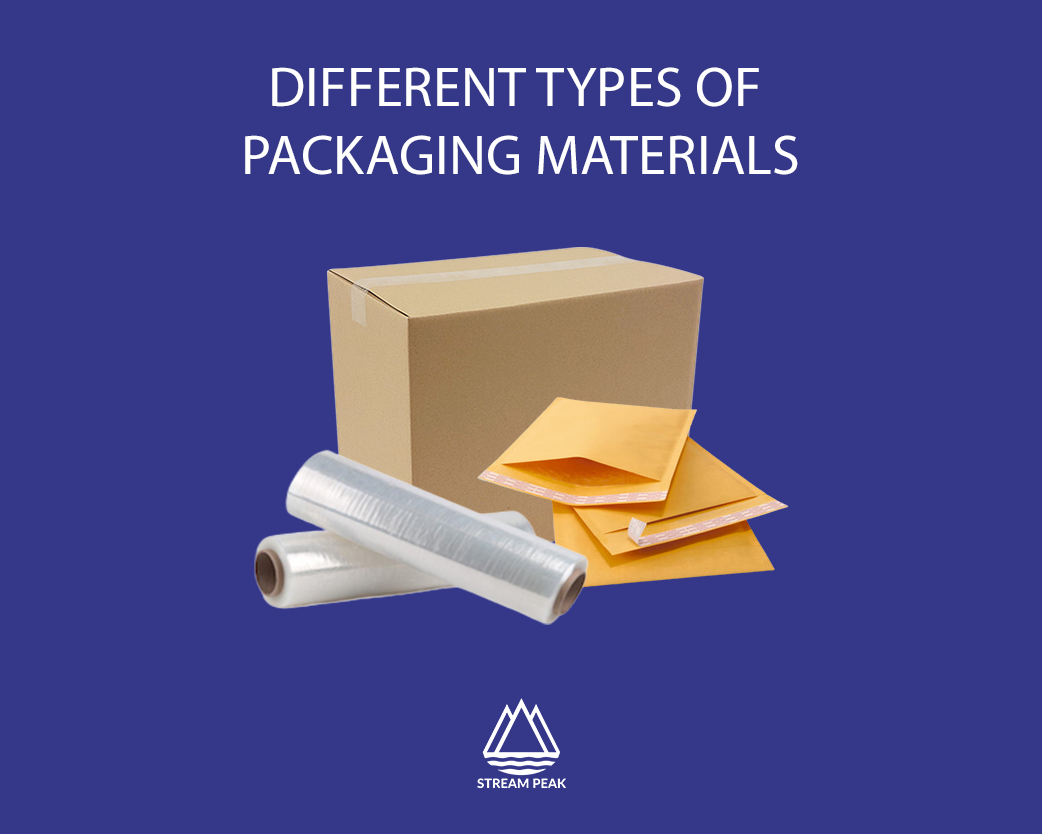
Different Types of Packaging Materials
Packaging can protect products inside, keeping them safe during shipment and storage. Reliable packaging also helps to attract customers and provides information to help buyers understand what they are purchasing. With proper packaging, make a good impression, protect branding and avoid damage.
Paperboard boxes, plastic wraps, stretch film and aluminium foil are some examples of widely used packaging materials. Each has its advantages and disadvantages. In this article, let us share more about the different types of packaging.
Why is packaging important?
Preventative packaging solutions are key to preventing damage. It is also recommended to plan and prepare the packaging materials used so that goods can arrive in good condition to end users.
Packaging is also part of a product’s branding. Consumers are now more conscious of the environment and look for products with sustainable packaging when purchasing. The packaging can be used to communicate the values and benefits of the product, which affects the buying decision. Having easy-to-use packaging will also enhance the user’s experience.
Common types of packaging materials
1. Carton Boxes
Boxes have been a standard form of packaging for decades worldwide, as they are used for different products. They are often supplied as flat stacks, where the boxes must be assembled into the classic rectangular box shape before use.
They are made of thick cardboard with a top or bottom folding lid. Paperboard boxes provide minimal packaging protection and are often used with reinforced aluminium foils and desiccants for extra protection against moisture.
A corrugated container can protect products throughout long-distance shipment, handling, and transportation. The boxes are made to resist the normal wear and tear of most transportation activities. High-quality packing boxes that allow stacking offers better space management in a warehouse or for transportation.
2. Stretch film
Stretch film secures goods on pallets, preventing them from moving and getting damaged during shipping. The strong and opaque films also protect products from dirt, moisture, and dust while giving products visibility. The film can manually wrap products with a handheld tool or an automatic stretch wrapping machine.
Maximise warehouse space with stretch film by securing and stacking goods higher on pallets. The packaging film is low in cost, easy to use and can be used on products with different shapes and sizes with its flexibility.
3. Shrink Wrap
Shrink wrap is one of the most used packaging materials for finished goods where heat is applied to the film either by a heated conveyor tunnel, heat gun, or shrink wrap machine. Due to its flexibility, the film is one of the few packaging solutions that can be used for just about any item. Once the shrink wrap is cooled, the film will shrink tightly around the product, maintaining its shape, and any tampering will be obvious.
The packaging film protects items from dust, moisture or dirt. The wrap is also durable, making it hard to tear or puncture once sealed, keeping goods safe during transportation or storage. The shrink film is low in cost compared to other packaging solutions making it ideal for many manufacturers.
4. Poly Bags
Polybags are translucent or clear plastic bags used for packaging and shipping goods. The bags are manufactured using polyethene, a widely used plastic packaging formulation. The thickness of the common polybags ranges from 1-2 mils, and because of their sleek body shape, pleasant hand feel, reflectivity, and excellent flexibility, polybags are widely used.
The most popular polybag use is in packaging for various consumer goods, including t-shirts,
business magazines, mailers, bed linens, pillows, and many other items. Poly bags can be customized in different thicknesses and strengths. The stronger and more puncture-resistant a bag is, the thicker it is.
5. Flexible pouches
Flexible pouches are made of foil or plastic and can be used for a wide range of industries. Some applications include the packaging of food, drinks, and industrial liquids. They are economical and have a lower environmental impact than alternatives such as glass, paperboard and aluminium.
Flexible packaging can be customized to fit almost any type of application. They are light, simple to handle, transport, and store easily. The pouches are often simple to use and have practical reclose features that allow the packing to be resealed for convenience and maintenance of product freshness.
6. Envelopes
Small products such as computer parts, apparel, and gadgets can be packed and shipped easily in bubble wrap envelopes. The envelopes are a low-cost packaging solution made primarily of paper and sometimes with bubble wrap that provides insulation and impact protection.
Options for different requirements, such as self-sealing, peel-and-seal, card-backed, and recyclable envelopes, are available. Peel-and-seal envelopes provide additional security because of their strong sealant strip. The envelopes can also be customised to include the logo, text, and colours.
Conclusion
Each product has different packaging requirements, and packaging is a preventive measure that protects products, prevents them from going bad and decreases costs during transportation and storage. Proper packaging creates a good impression for the manufacturer. Businesses can choose from wooden, plastic or rubber packaging materials to keep goods in a good position and transport them safely.

